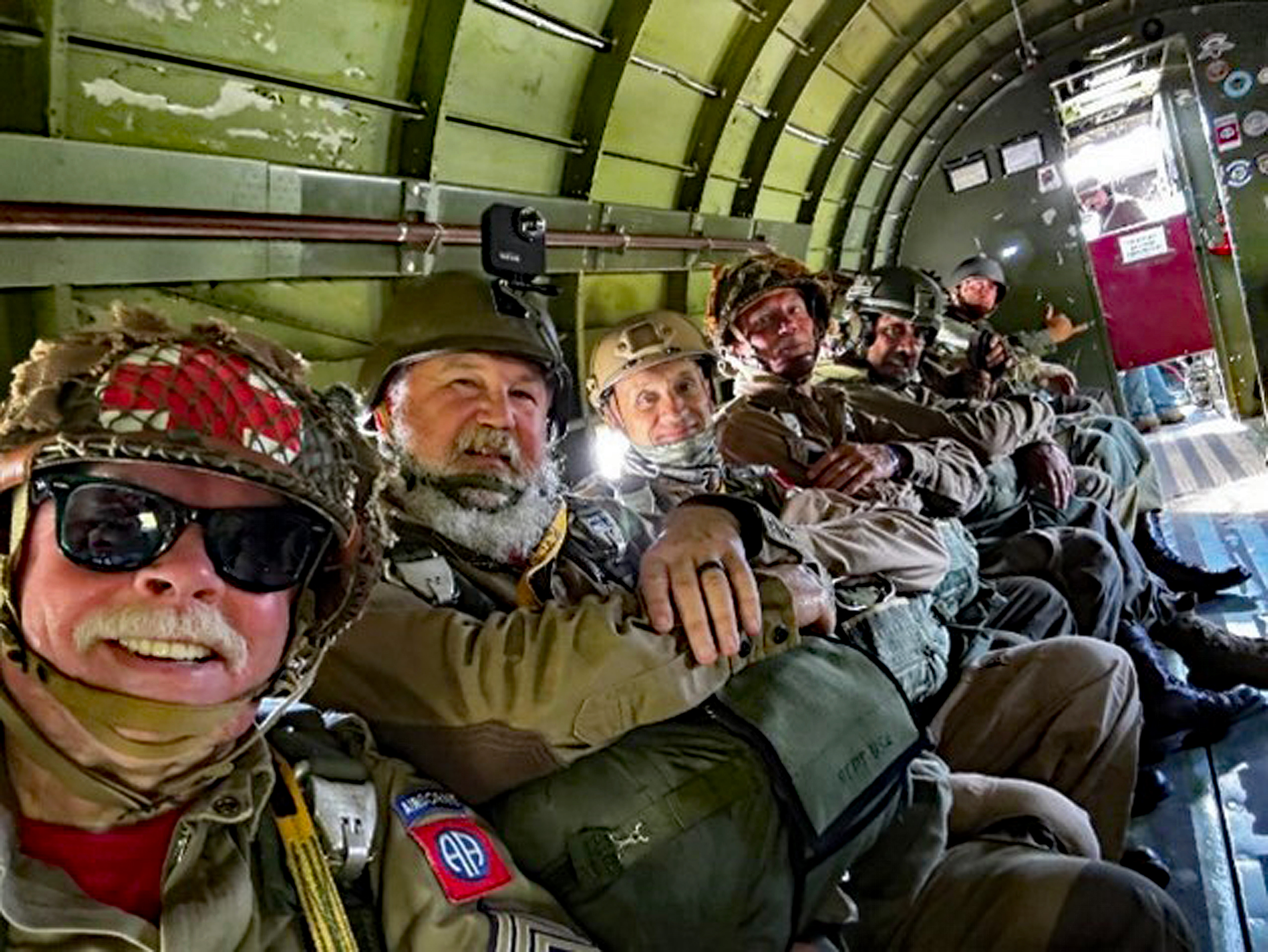We Honor Our Airborne Troops

By Donna Reuss
Alexandria, VA – August is a significant month for United States Army Paratroopers. On 16 August 1940, the first official military parachute jump took place at Fort Benning, Georgia. Forty-eight brave men volunteered to be part of the first parachute test platoon.
Since then, thousands of military members have volunteered to participate in the incredibly challenging, stressful, and physically demanding training at the US Army Airborne School at Fort Moore (formerly Benning), called the “birthplace” of America’s Airborne. Today, airborne insertion is still maintained as a rapid response capability to get troops on the ground anywhere in the world within hours for a variety of missions.
The terms “paratrooper” and “airborne” often are used interchangeably, but there is a slight difference. A paratrooper is a military soldier specially trained to parachute from aircraft into combat zones or other areas of operation. While a paratrooper can be called airborne, the term generally refers to a broader category of military units and operations involving deploying troops and equipment by air, either by parachuting from aircraft or other methods, such as air assault units transported by helicopters.
The idea of airborne forces dates at least as far back as 1784. Following the first successful manned balloon flight, Benjamin Franklin is quoted on the possible dangers of air attack as envisioning “ten thousand men descending from the clouds.”
The first US military member to formally propose the concept of employing airborne troops in wartime was Brigadier General William “Billy” L. Mitchell. In October 1918, Mitchell suggested the creation of an American airborne component to General John J. “Black Jack” Pershing, commander of the American Expeditionary Force fighting in France. But World War I ended before the general could carry out his plan, and the idea of creating an American parachute division disappeared as the US Army rapidly demobilized.

During the interwar period, there was little interest in airborne capacity. When the US military dropped 12 Marines over Washington, DC, in an early parachute experiment, Marine Corps brass downplayed it as a “carnival attraction.”
The first step toward permanent US Army airborne capability came in May 1939, when the War Department authorized a small outfit that could be “…transported by airplanes, to parachute to the ground a small detachment to seize a small but vitally important area…” The parachute test platoon at Fort Benning formed in April 1940.
Then came World War II. Russia and Germany already had parachute forces. Even France had recruited 200 natural disaster nurses to serve as reservists for a wartime uniformed medical unit, the first nation to organize women into an airborne unit.
In early 1941, General William C. Lee, known as “the father of American paratroopers,” stressed the importance of forming this new arm of the military. However, the German conquest of Crete solely by glider and parachute troops in May 1941 was considered “the greatest single impetus to airborne development and expansion” in the US Army. From that first test platoon in 1940, a force of more than 100,000 paratroopers grew. Assigned to the 11th, 13th, 17th, 82d, and 101st Airborne Divisions, they fought in every theater during World War II.
In November 1942, the 509th Parachute Infantry Battalion conducted the first US airborne combat operation as part of Operation Torch in North Africa. Parachute assaults were key to further US military successes in Sicily, Salerno, the Battle of the Bulge, and most famously, the D-Day invasion at Normandy, France, where 13,500 paratroopers were dropped to pave the way for the amphibious landings.
The US has continued to develop its airborne capability, and airborne forces have been used in many operations since their inception 84 years ago. The Army expanded to encompass Ranger and Special Forces units. The Air Force ParaRescue had its origins in WWII. Some Navy SEALS perform parachute operations, and the service has a parachute demonstration team called Leap Frogs. And while it does not maintain dedicated parachute infantry units, all US Marine Corps divisions train for and perform air assault operations.
Airborne forces have made combat jumps in Korea and Vietnam, as well as conflicts and peacekeeping operations in Panama, Grenada, Desert Storm, Haiti, Somalia, and the Balkans. Most recently, airborne forces were vital to liberating the people of Afghanistan from the repressive, violent Taliban regime.
On 2 August 2002, President George W. Bush proclaimed August 16, the anniversary of that first official US military parachute jump, a holiday to recognize the contributions of American airborne troops. Senate Resolution 235, issued 3 August 2009, officially recognized the date each year as National Airborne Day.

Since then, August 16 has been a patriotic day with a special cachet. To borrow from the proclamation, airborne combat continues to be driven by sky soldiers’ bravery and daring spirit. Airborne troops are said to be the elite of the elite. They continue to serve proudly worldwide in the global coalition against terrorism.
You can observe the day by thanking a paratrooper, using #NationalAirborneDay to post on social media, or visiting France’s Sainte-Mère-Eglise Airborne Museum website for information and stories. Or even go skydiving!
Special thanks to Keith Kettell, American Legion Post 24, for contributing to this month’s article.
If you are a veteran, veteran’s family member, or know a veteran who needs help, go to Virginia Board Veterans Services at www.dvs.virginia.gov/dvs; dss.virginia.gov/community/211.cgi; contact American Legion Post 24 Veteran Service Officer at [email protected]; or check out the Resources List on the Post 24 website: valegionpost24.com. For crisis intervention and suicide prevention services, dial 988 and Press 1, or text 838255 for the Veterans Crisis Line.
ICYMI: Competition Times for Alexandria, Virginia’s Olympians




